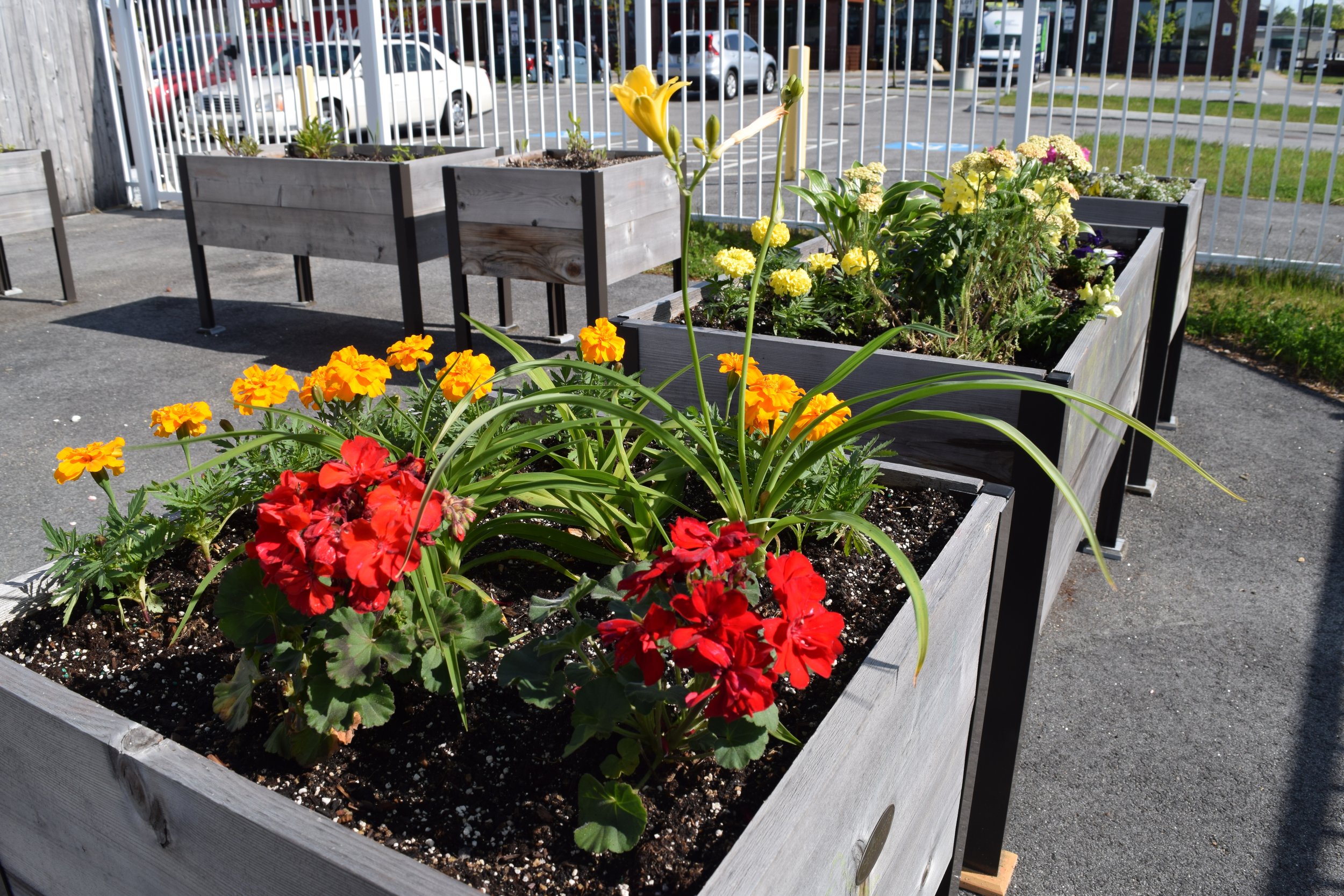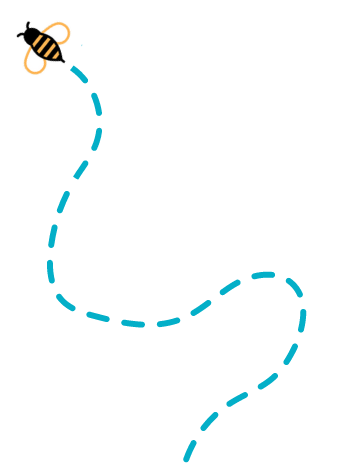The Bees are Back in Town!
Welcome back, bees!
After a long winter away, we're buzzing with excitement to announce the return of our beloved bees to the Children's Museum & Theatre of Maine. As the flowers on Thompson’s Point bloom and the weather warms up, our busy little friends are ready to get back to work, pollinating and educating visitors about their crucial role in our ecosystem.
Visitors will find the bees in the IDEXX STEM Learning Hub on the third floor. The wall-mounted observation beehive features a transparent window within a wooden frame that houses hundreds of honeybees.
The hive’s unique design allows guests to look closely at the bees while observing behaviors like making honey, cleaning the hive, caring for eggs and larvae, producing beeswax, and leaving the hive to harvest nectar and pollen.
What’s so special about bees?
Bees are essential to food production. When bees harvest nectar they transfer pollen from flower to flower. This helps plants reproduce and contributes to the successful growth of the fruits and vegetables that humans eat. This process is called pollination. Bees and other pollinators help keep food on our tables!
You can help your local honeybees and other pollinators do what they do best by growing bee-friendly plants and flowers at home, including the following:
Aster
Bergamot
Blueberry
Clover
Delphinium
Goldenrod
Lavender
Milkweed
Sunflower
Zinnia
Observation Beehive FAQ’S
CMTM receives lots of questions about this unique exhibit. Read on to learn more about our honeybee hive.
How do the bees get their food?
CMTM’s Live Exhibits Team feeds the bees! Visitors can see their feeding station inside the hive. They also have access to the outside. Keen-eyed guests may notice pollinator food and water stations on CMTM’s grounds, and the Teaching Garden in the Outdoor Adventure Playground is full of flowers.
What do bees eat?
Honeybees use nectar and pollen from flowers to sustain their hives. Nectar is converted into honey, which is rich in minerals and carbohydrates (and a tasty treat for both humans and bees!). Pollen is a great source of protein and is an important food for growing larvae.
Where is the queen bee?
Queen bees are essential to the life of their hive. They are the only bees in a colony capable of laying fertilized eggs, and they regulate the hive’s activity through chemical messaging. There is only one queen bee in each colony.
The Queen can be identified by her body type. She is larger and longer than other bees, with an abdomen (def: the belly or part of the body that contains the digestive organs) that extends beyond the length of her wings. Her back is shiny and hairless, while worker bees have fuzzy abdomens. CMTM’s queen has a harmless mark on her back to make her easier to spot! Beekeepers often mark their queens so that they are easy to find.
Still can’t find the queen? CMTM’s hive is double-sided! She may be temporarily out of sight.
Will the bees sting me?
Worker bees have stingers but will only use them to protect themselves from danger. Honeybees are generally very docile, and some beekeepers handle their bees without protective gear!
CMTM’s observation hive allows visitors to see the inner workings of a beehive safely. They can study the bees in their home, doing what they do best: making honey, raising young, and caring for each other! Seeing bees this way helps build empathy for these important insects and helps children learn not to be afraid of bees.
What do the bees do in the winter?
CMTM works closely with a professional beekeeper to ensure the health and well-being of the hive. When local food sources become depleted with the change of the seasons, the bees go off-site to a place where they can comfortably rest for the winter. The bees return to CMTM in late spring when the Portland Peninsula is in full bloom.





